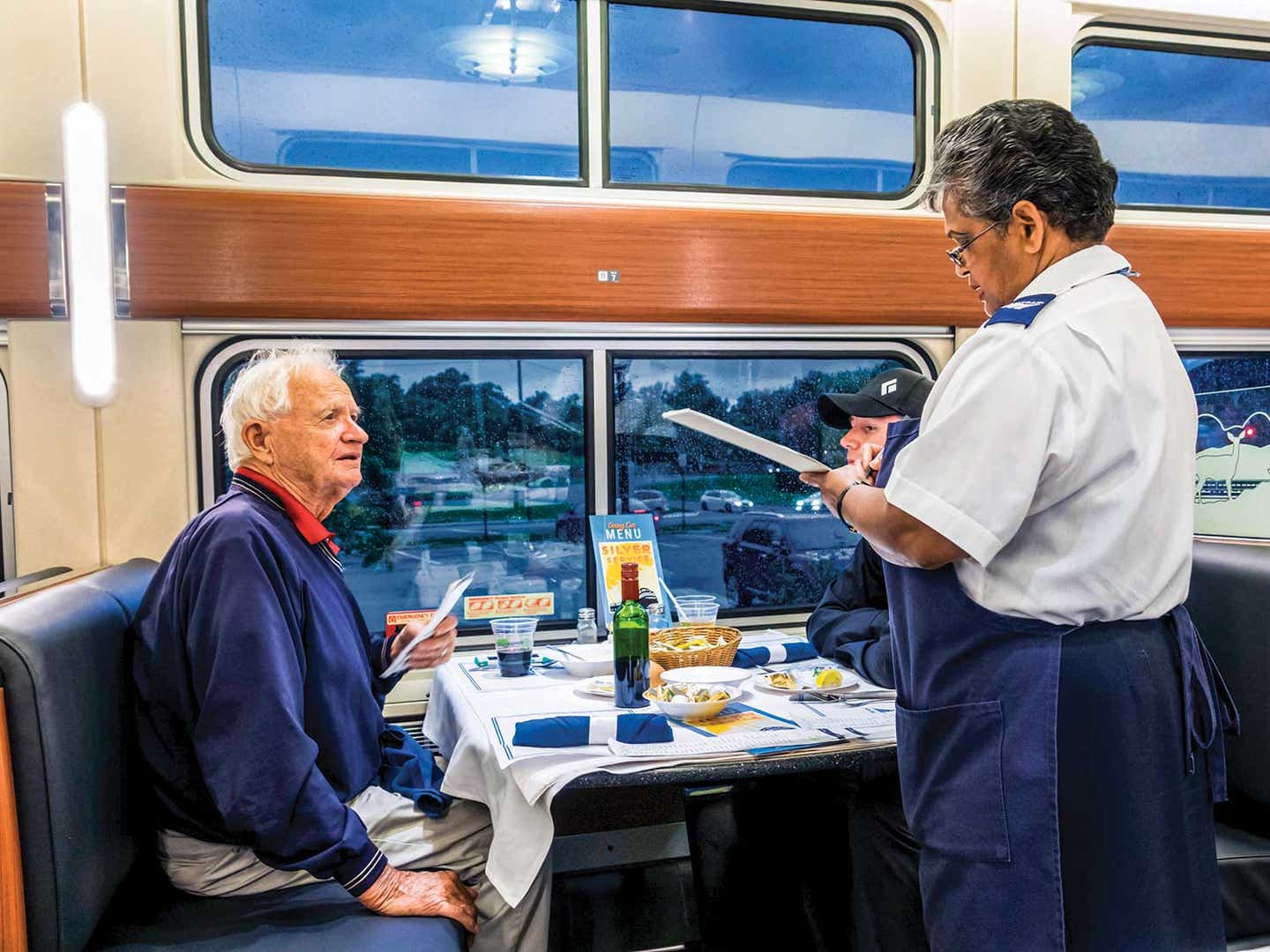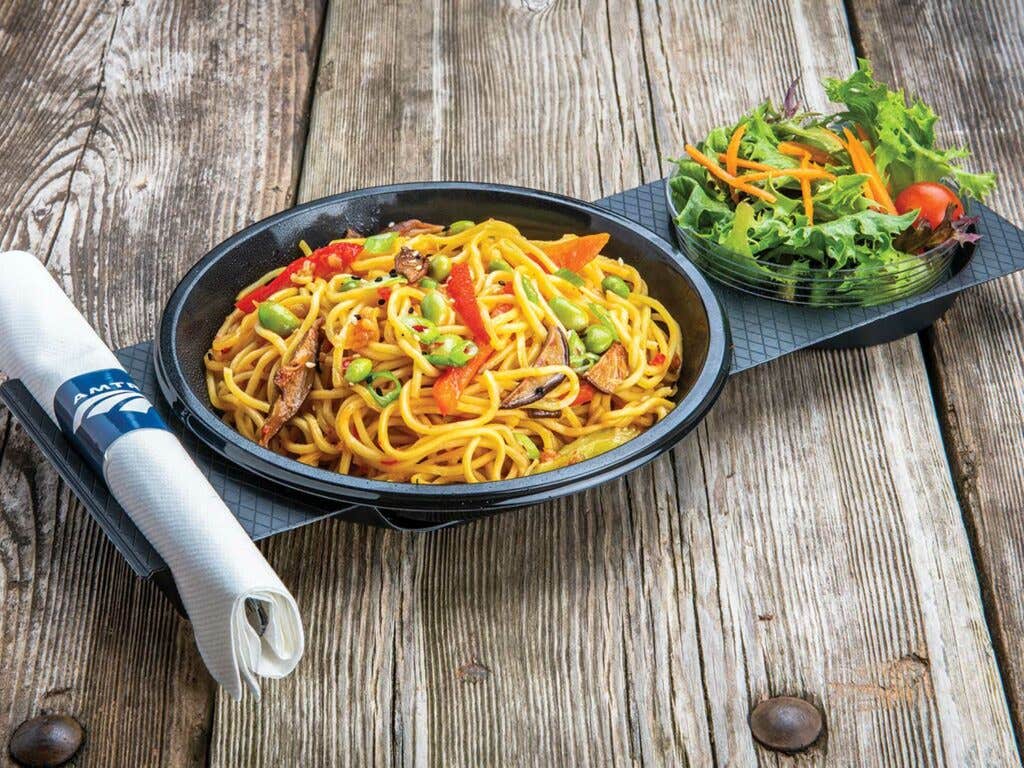
What We Lose When We Lose the Amtrak Dining Car
On the unexpected pleasures of eating with strangers in close quarters
Almost a decade ago, I made two good decisions. The first was to move from New York to New Orleans. The second was to get there by train. I boarded the Crescent at Penn Station, carrying a small, soft-sided cooler that contained a loaf of bread, a stick of dried Italian sausage, blocks of cheese and pâté, a bag of my mother’s chocolate chip cookies, and a bottle of Bulleit rye. I was not going to go hungry. I had purchased what Amtrak calls a roomette, an ingeniously designed closet that was, in the best possible way, like traveling in an airplane bathroom. I spent most of the 30-hour journey there, in blissful isolation.

But I was equally thrilled each mealtime, when a knock came at my cabin door, alerting me that it was time to emerge and weave my way to the dining car. While I have almost completely forgotten the meals I ate there (I believe that at least one was filet mignon, that classic signifier of luxury), I remember each of the dining companions with whom, as a solo traveler, I was randomly joined. One was a young woman heading home from North Carolina. She told me about the hot sausage po’boy at Two Sisters Restaurant in the Treme, a sandwich I made it my business to try during my first week in town, and still seek out at the restaurant’s new location in New Orleans East. Another companion, a man in his 50s, sold parts for air conditioning and refrigeration systems, a subject he did not tire of discussing. I can’t say I came away sharing his enthusiasm, or that I retained much of what we discussed, but I recall the pleasure of listening to him—the jargon, the anecdotes, the opinions about arcane matters of the refrigeration arts, all rolling hypnotically along as we ate, like a soothing echo of the wheels beneath.
Look, the world is always trying to break us apart, not least at the table, where we’re regularly told that the glorious future consists of ever more efficient delivery services that promise we’ll never have to cross paths with strangers on our way to getting fed. Amtrak announced in September that it would be suspending traditional dining-car service, the kind with white tablecloths and cooked-to-order food, on most overnight routes east of the Mississippi. The company blamed millennials, those all-purpose scapegoats. (“They want more privacy; they don’t want to feel uncomfortable sitting next to people,” according to a, presumably nonmillennial, Amtrak exec.) But this process has been going on since…well, at least since we abandoned trains for the individual cocoons of the automobile. All the more reason I wish Amtrak, of all entities, had stuck to its guns. If a railroad can’t defend the fundamental human pleasures of getting there together—whether to your final destination or a full belly—then who will?
Keep Reading
Continue to Next Story










